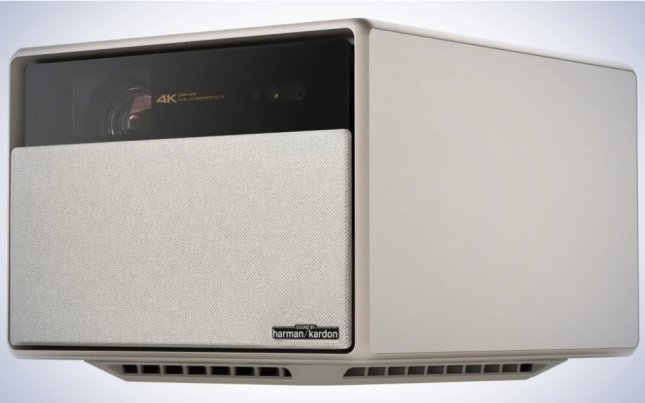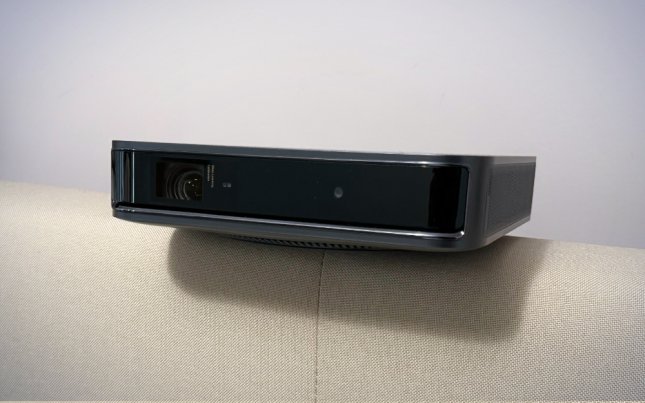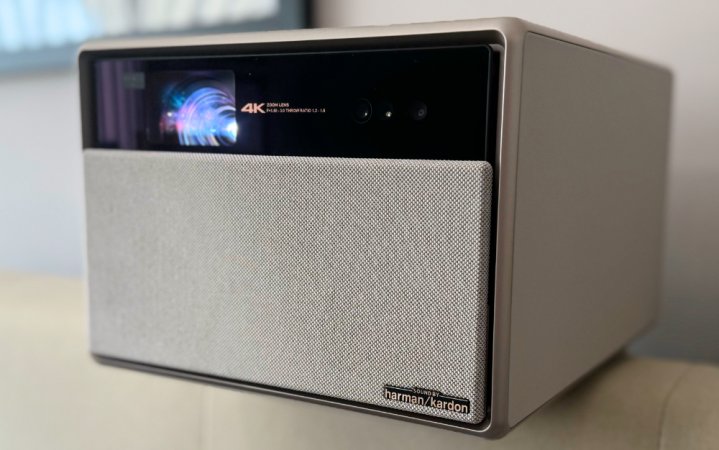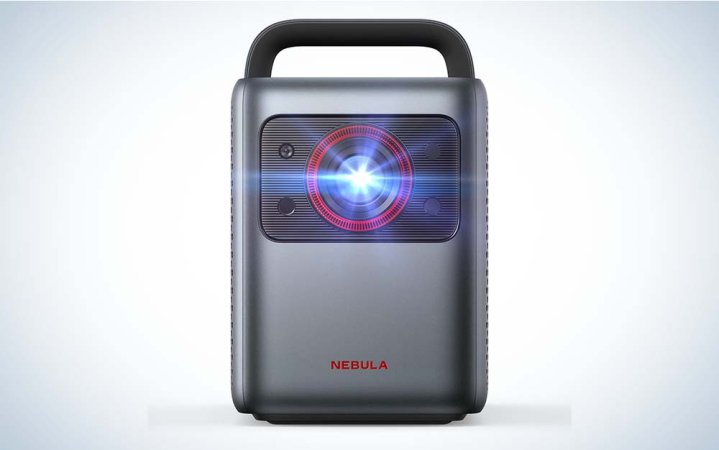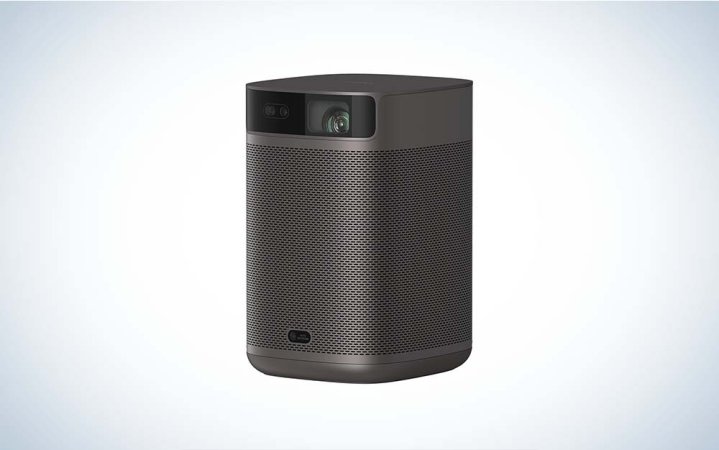We may earn revenue from the products available on this page and participate in affiliate programs. Learn more ›
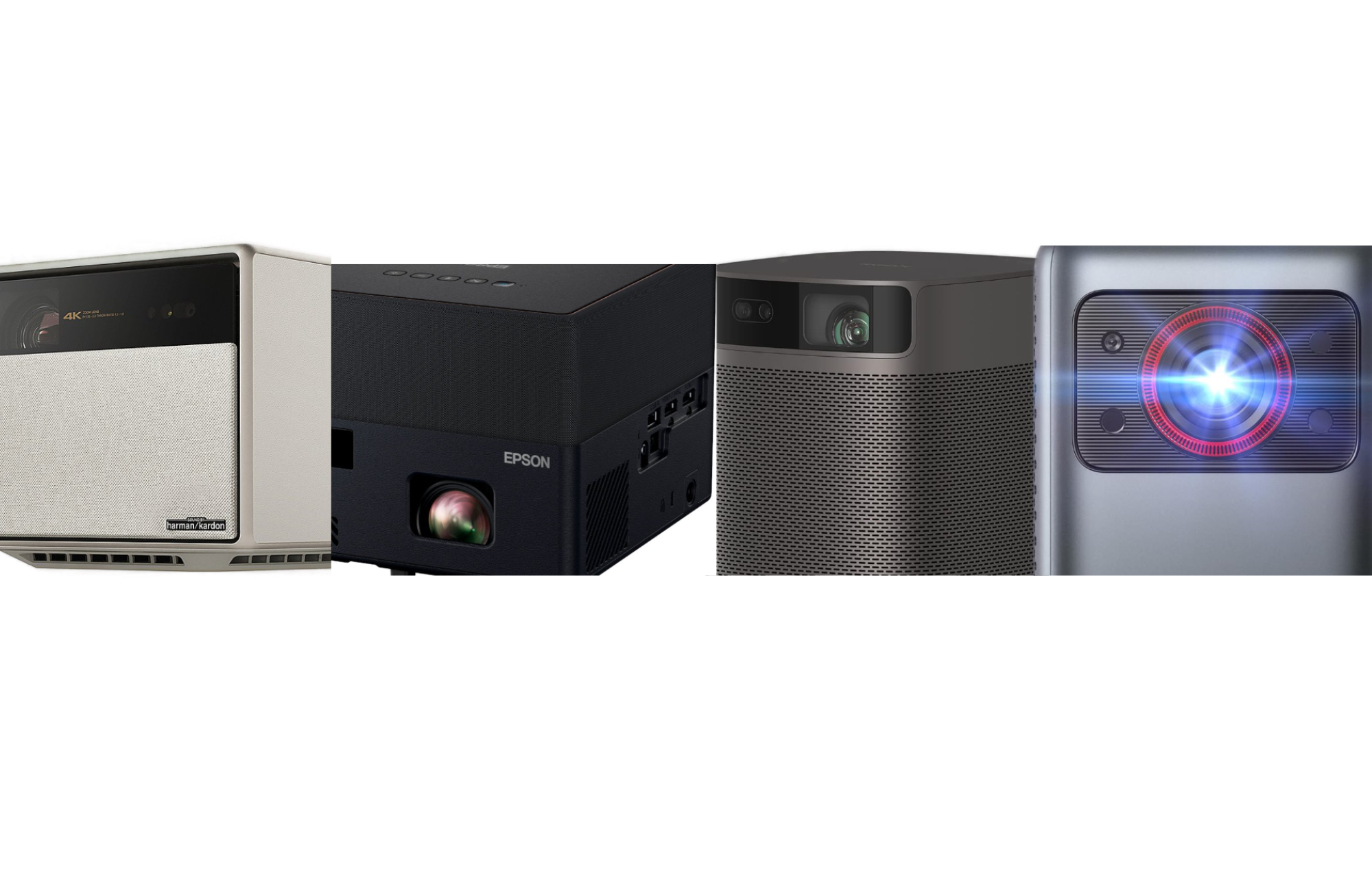
As the weather warms up, outside activities heat up, and outdoor projectors transform the natural world into open-air movie theaters. They feature powerful lamps for use even when the sun hasn’t fully set or the streetlights are on, and they’re light enough to make moving them from your media room to your deck easy on your back. Many projectors suited for outdoor use include features like rechargeable batteries, smart TV operating systems, and robust speakers to help streamline set-up. Most importantly, just like any projector you’d buy for indoor use, they don’t skimp on important image specs, such as color, contrast, and resolution. When you don’t want your cul-de-sac drive-in to become a giant car wreck of a viewing experience, turn to the best outdoor projectors.
- Best overall: XGIMI Horizon Ultra
- Best HD: Epson Home Cinema 3800
- Best portable: Dangbei Atom
- Best for daylight: Anker Nebula Cosmos Laser 4K Projector
- Best for rooftops: Epson EpiqVision Mini EF12
- Best for streaming: XGIMI MoGo 2 Pro Mini Projector
- Best budget: GooDee Video Projector
How we chose the best outdoor projector
When considering the best outdoor projectors for our recommendations, we relied on our experience with home-theater projectors. Also, we reached out to professionals in the TV and AV worlds to discuss their favorite projector brands and the types of specs they care about when shopping. We read trade journals and websites, sifting through reviews to get the impressions of typical users. We narrowed our selection of projectors down to 10, focusing on image quality. Color, contrast, and resolution were all taken into account. Balanced against these specs were features making the projector most suited to outdoor use, including brightness, portability, and versatility. Price was an important factor, especially regarding “bang for your buck,” though it wasn’t of primary concern when judging the higher-end categories of projectors.
The best outdoor projectors: Reviews & Recommendations
Shopping for outdoor projectors can be tricky, filled with jargon, numbers, and an endless parade of acronyms. If you want the most out of your home-theater experience, there’s much to learn, especially when hosting a backyard movie night. So read on for guidance in choosing the best outdoor projectors to watch the stars under the stars.
Best overall: XGIMI Horizon Ultra
XGIMI Horizon Ultra
Pros
- Stunning video quality
- Surprisingly good audio system
- Snappy user interface
Cons
- No native Netflix
- Can’t run on battery power.
Specs
- Brightness: 2,300 ANSI Lumens
- Ports: 2 x HDMI, 2 x USB-A, 1 x Ethernet, 1 x Optical, 1 x AUX
- Weight: 11.24 pounds
XGIMI’s Horizon Ultra is hands-down the best 4K projector we’ve tested yet, and at 2,300 lumens, it has enough brightness to handle projections in the great outdoors. One of the biggest strengths this projector offers as an outdoor projector is the fact that it’s all in one. It runs an operating system (Android TV) that allows you to stream TV shows and movies from most services (Netflix is conspicuously absent) without plugging in a media streamer. The Horizon Ultra’s processor is also powerful enough to run this operating system without lagging, which is helpful if you’re switching between apps regularly.
This projector has a pair of built-in Harman Kardon speakers loud enough to cut through most ambient outdoor noise and provide a surprisingly good audio experience when watching videos and playing games. It’s also compact and light enough to fit comfortably in a backpack for easy transport. It doesn’t run on battery power, so you’ll need access to a consistent power source, but this won’t be a problem for backyard movie nights. While it’s inessential, we were really pleased with the Horizon Ultra’s overall build quality, from its mesh outer covering to the fact that its remote is made from metal instead of plastic.
From a performance perspective, this projector is hard to beat. The Horizon Ultra continually produced a bright, colorful image even in a room with some light leakage. It won’t be able to compete with bright sunlight, but that’s the case with all projectors. This is the first long-throw model with support for Dolby Vision, HDR10, and HLG, so it’ll product a clear image regardless of what’s being shown on screen. Automatic keystone correction will keep the screen aligned, whether you’re projecting a 40- or 200-inch screen. XGIMI’s upcoming Horizon Max, announced at CES 2024, offers an IMAX 1.90:1 aspect ratio, more lumens, an updated Intelligent Screen Adaption system, and more immersive sound if you need a larger screen (albeit at a higher price).
Our tests included playing video games like Phantasy Star Second Story R, wherein characters dart across the screen while visual effects pop up constantly. This was no problem for the Horizon Pro’s 18ms latency and 60Hz refresh rate, which handled the task with aplomb. This 4K projector’s color reproduction was fantastic, and shows or games with support for HDR (high dynamic range) look even better. The Horizon Ultra’s speakers, which we mentioned earlier, could decode Dolby and DTS and deliver clear dialogue and deep bass. We never needed to connect external speakers to the projector, which was quite the feat. Our only complaint with this projector remains its lack of native Netflix support, which is a bummer given the ubiquity of the service. If you don’t mind plugging in a media streamer or sideloading apps, this won’t be an issue, so it’s hardly a reason to ding the Horizon Ultra too harshly.
Best HD: Epson Home Cinema 3800
Best HD projector
Pros
- Accurate color
- Can display 4K content using pixel shifting
- Easy-to-adjust settings
- Wide variety of inputs
Cons
- Expensive
- Somewhat heavy
Why it made the cut: This ultra-bright HD projector delivers a cinema-like picture with brilliant colors and deep blacks even when it’s not completely dark.
Specs
- Brightness: 3,000 ANSI Lumens
- Contrast Ratio: 100,000:1
- Weight: 15.2 pounds
The Epson 3800 projector is an excellent outdoor choice for anyone who doesn’t need native 4K resolution but still wants a large, movie-theater-quality picture. And with a contrast ratio of 100,000:1 and 10-bit HDR color processing, this 3LCD projector will give you deep blacks and bold colors (100% of the RGB color signal) on a screen up to 300 inches from corner to corner.
What’s more, the 3800 can still deliver a 4K image—sort of. While its native resolution is 1920 x 1080, it uses a technology called pixel shifting to interpolate the missing pixels and fill out a full UHD frame. Is it perfect? No, and at the maximum screen size some loss of sharpness has been reported. But at, say, 150-200 inches, issues become much less noticeable.
At 14.1 pounds, the projector isn’t as heavy as units meant to live permanently in a media room, but it’s also not a complete lightweight. The same could be said for this smart projector’s $1,700 price tag, which is a bit high for an HD unit. On the other hand, the superb picture quality and ability to play 4K movies without having to down-res them to HD are worth the extra bucks for this high-quality projector. The Epson also features dual HDMI 2.0 ports, dual USB ports, dual 10-watt speakers, and Bluetooth connectivity for easy integration into an external audio environment.
Best portable: Dangbei Atom
Dangbei Atom
Pros
- Fantastic color reproduction for its size
- Built-in speakers
- Bright for a compact projector
Cons
- Single HDMI port
Specs
- Brightness: 1200 ANSI Lumens
- Contrast Ratio: N/A
- Weight: 2.82 pounds
We ranked Dangbei’s Atom as the best mini projector, and if you’ve got minimal space for your outdoor home theater setup, it’s the one to get. The Atom comes in at just 1.87 inches thick and under three pounds, which is a technical triumph of engineering given its size. It has a 1200 ANSI Lumen bulb, which is exceptionally bright compared to similarly sized models, supports HDR10, has a pair of built-in stereo 5W speakers that do a surprisingly good job, and a processor capable of running Android TV 10 smoothly. This is one of the few Android TV projectors that supports Netflix, which means you won’t have to plug in a media streamer to get access to the popular video streaming service, further improving its portability.
We tested the Atom by playing video games on the Nintendo Switch. In general, colors looked good and games sounded pretty rich. There wasn’t a discernible amount of latency when playing games like The Legend of Zelda: Breath of the Wild and/or Tears of the Kingdom, which admittedly runs at 30 frames per second. Having said that, a 1080P image projected on a 100-inch screen does look worse than one at 4K. If your outdoor projector needs are more modest, or you’re willing to give up some visual fidelity in the name or portability, this is a fine tradeoff. However, if you stream a lot of 4K content, it may be wise to look elsewhere. Our only technical complaint is that its single HDMI port means you’ll be swapping out components whenever you want to use a different device. Again, this is less of an issue thanks to the Atom’s support of Netflix out of the box.
Given the Atom’s size—it was practically effortless to carry the projector and power cable in one hand from room to room—you can easily take it outdoors or set up and break down your big-screen home-theater setup in a couple of minutes. The Atom is the ideal mini projector for outdoor movie and gaming enthusiasts.
Best for daylight: Anker Nebula Cosmos Laser 4K Projector
Best for daylight
Anker Nebula Cosmos Laser 4K Projector
Pros
- Impressive brightness
- 3840 x 2160 display resolution
- 4K laser system
- Built-in Android TV
Cons
- Expensive
Why it made the cut: This 4K UHD laser projector provides images you can watch in daylight with built-in Android TV, two 10-watt speakers, and a handle that lets you easily transport it.
Specs
- Brightness: 1,840 ANSI Lumens
- Contrast Ratio: 1,500,000:1 dynamic
- Weight: 10.7 pounds
For those looking to create a cinematic experience in all kinds of light, the Nebula Cosmos Laser 4K Projector can help you do it. The 4K UHD laser projector comes equipped with 1,840 ANSI Lumens and 3840 x 2160 display resolution for a bright and vivid picture even on a sunny day. Outdoor projector setup is easy for this model, which is available in 1080p and 4K versions. The Nebula Cosmos is also designed with intelligent technology that allows it to adapt to the environment for a display of up to 150 inches. This daylight projector also has two 10-watt speakers and two 5-watt tweeters, creating an immersive sound experience.
The built-in Android 10 TV provides access to more than 400,000 movies and 7,000 apps and streaming services. And it’s designed with an ergonomic handle that lets you easily move it from the living room to the backyard. That said, the lack of battery and corded electric power will be a factor in the settings in which you can use this projector.
Best for rooftops: Epson EpiqVision Mini EF12
Best rooftop projector
Pros
- Native 1080p resolution
- Supports 4K media (down-converted to HD)
- 3-chip LCD avoids rainbow artifacts
- Built-in Android TV
- Excellent speakers
Cons
- No 3D support
- Could be brighter
Why it made the cut: This small and light projector is easy to lug up a few flights of stairs, but it comes in heavy with its picture quality and built-in Android TV.
Specs
- Brightness: 1,000 ANSI Lumens
- Contrast Ratio: 200,000:1
- Weight: 4.7 pounds
Movies on the rooftop in the summer—what could be more fun? The EpiqVision Mini EF12 is small and light enough to perch on even the highest roof and delivers a gorgeous 1080p picture once you’re there. The integrated Android TV means you don’t have to go back downstairs to grab a Blu-ray player, and the built-in 5-watt Yamaha stereo speakers save you a trip for extra audio. The 1,000-lumen MicroLaser light source is bright enough for a 140-inch outdoor projector screen if it’s really dark out. Still, it’s more reasonable to expect 80 inches on most neighborhood rooftops awash in light pollution. Thanks to the projector’s 200,000:1 contrast ratio, colors are nicely saturated, and shadow details pop. Three-chip LCD technology displays 100 percent of the RGB color range. Besides the built-in streaming functions, the EpiqVision Mini also has two HDMI inputs for external players.
Best for streaming: XGIMI MoGo 2 Pro Mini Projector
Best for streaming
XGIMI MoGo 2 Pro Mini Projector
Pros
- Full HD (1080p)
- Android TV 11 built-in
- Lightweight
Cons
- Doesn’t provide as much brightness as other models
Why it made the cut: This lightweight mini projector is Full HD (1080p), has Android TV 11 built-in, and can work with Netflix.
Specs
- Brightness: 400 ISO lumens
- Contrast Ratio: Not available
- Weight: 4.6 pounds
The XGIMI MoGo 2 Pro Mini Projector makes it easy to stream your favorites. This mini projector comes internet-ready with Android TV 11 built-in, providing quick access to over 5,000 apps, including Paramount+ and HBO Max (and you can use a streaming device or contact customer service to watch Netflix.) At 4.6 pounds, this wireless projector is designed for portability and just requires two AAA batteries (we recommend rechargeables) to operate.
The MoGo Pro 2 supports HDR 10 and features intelligent screen adaption technology that automatically adjust to the viewing space. It’s also 3D-ready. And its two 8-watt speakers work with Dolby Audio for quality sound. That said, it’s not as bright as some other models.
Best budget: GooDee Video Projector
Best budget projector
Pros
- True HD resolution
- Dual 3-watt speakers
- Incredibly inexpensive
Cons
- No control for display size
- Hard to adjust the unit height
- No wireless connectivity
Why it made the cut: Despite some flaws, this projector impressed with its 1080p native resolution and a wide variety of inputs—all for about a 10th of the cost of our top picks.
Specs
- Brightness: 300 ANSI lumens
- Contrast Ratio: 3,000:1
- Weight: 5 pounds
The most recent upgrade to the GooDee projector raises the native resolution from 1280 x 768 to full 1080p, a welcome upgrade that improves picture sharpness. A 300-lumen LED doesn’t provide the most light, but the projector can still create a 200-inch picture with respectable color and contrast—thanks in part to a 3,000:1 contrast ratio. It won’t win any awards for the picture quality, but considering that all this is delivered for less than $200, it’s an impressive device.
Expect some compromises at this price when purchasing a budget-friendly projector, however. For one thing, the projector doesn’t perform well with ambient light; wait until the sun is truly down before starting your movie. It also suffers from a dearth of adjustment controls. For instance, you’ll need to move the projector closer or farther from the screen to make the picture bigger or smaller. But the wealth of connectivity and dual 3-watt speakers add to the convenience and value.
What to consider when shopping for the best outdoor projectors
Projectors shine light on a surface that reflects the light back to our eyes. That means using a projector with a plain, white wall isn’t going to deliver the best picture because too much light gets absorbed by the paint. For the optimal viewing experience, you need to buy a screen—which can run from around $25 to a little over $130, depending on sizes, stands, and accessories. These have reflective surfaces that increase perceived brightness, contrast, and color saturation—all of which our top picks for best outdoor projectors deliver.
Luminosity
Brightness, measured in ANSI lumens, is one of the most important specs for an outdoor projector. This describes how much light the projector creates. The more light, the bigger and brighter the picture. It also determines how dark a space needs to be for the best projector performance. Since outdoor projectors can’t take advantage of blackout curtains to fight ambient light from a full moon or from inside your neighbor’s home, putting out as much light as possible has distinct benefits. High-end projectors have brightness ratings of 2400 lumens or more, while less-expensive machines deliver somewhat less. While manufacturer claims don’t always match independent testing, the numbers are useful for making general comparisons—a 3,000-lumen projector will be about three times brighter than a 1,000-lumen one. Remember, you can’t ever go wrong with more light, but brightness isn’t the only specification that matters when selecting a projector.
Let there be light
Images are created by focusing a light source onto a chip, and that image is then sent through a lens to your screen. Light sources come in three varieties: Lasers, LEDs, and Ultra High Pressure (UHP) lamps. UHPs are most common in mid-range and higher-end projectors and are essentially high-end light bulbs. Yes, they’re bright, but they also generate a lot of heat and, over time, can burn out. Replacements aren’t cheap, though you won’t have to swap out UHPs anywhere near as often as you might have replaced the old incandescent bulbs in your hallway. LEDs and lasers are far more efficient than UHPs, but there’s a significant increase in cost vs. performance, and they’re usually built into high-end models.
Chips
As mentioned above, projectors use imaging chips to create a picture, and there are three types: Digital Light Processing (DLP), Liquid Crystal Display (LCD), and Liquid Crystal on Silicon (LCoS). DLP chips find a home in units at all different price points and deliver average contrast and nice color. Sometimes units will use one DLP chip, while sometimes they use three: one each for the Red, Green, or Blue colors that make up an image. LCD chips can be found on budget to mid-range projectors and often have better color than DLP projectors, but contrast ratios sometimes suffer. Lastly, LCoS chips are used in mid- to high-end projectors; they tend to deliver the best picture quality overall, but cost more.
Single-DLP projectors sometimes suffer from what’s known as “the rainbow effect,” where bright objects on the screen leave very quick, multicolored pixel trails behind them. Many people don’t even notice these artifacts, which is why thousands of single-DLP projectors have been sold and continue to sell. Some people simply aren’t bothered by them. If you have an opportunity to test a single-DLP projector at a store, consider doing so in order to gauge how you feel about the rainbow effect should you encounter it.
Contrast ratio
Another aspect of picture quality is contrast ratio, or the difference between the black and white output. This is usually expressed as a number representing black followed by a number representing white, with each separated by a colon. So, for instance, something like 15,000:1.
The greater the difference between black and white, the more color variation the projector displays. An image from a projector with an 18,000:1 contrast ratio will, in most cases, look better than one with a 3,500:1 contrast ratio, with bolder, more true-to-life colors, subtler gradients, and richer blacks. Remember, though, contrast isn’t the only factor in determining picture quality, so always look at the number in the context of all the unit’s specs.
Resolution
Resolution describes the number of pixels that make up a digital image. A high-definition image is 1920 pixels wide by 1080 pixels high—we often simply call this 1080p. A 4K image (also called Ultra High Definition, or UHD) is twice as large, at 3840 pixels wide (close enough to 4000 to earn the name 4K). The higher the resolution, the sharper the image at large sizes.
A projector that can display a 4K image is wonderful and, since these units also play HD media, you’re covered for whether you’re streaming the latest Marvel movie in ultra-high-def or you’ve dug out an older Blu-ray. At the same time, many HD projectors use a technology called pixel-shifting to double the 1920 resolution. It’s not perfect, but many people won’t notice the difference, and these projectors cost less money. Also, the resolution isn’t the only factor determining picture quality; many movies look fantastic in HD, especially if you’re not blowing up the picture to monumental proportions.
FAQs
The best outdoor projectors cost roughly $900 to $1,900, depending on features and specs. Generally, with projectors, you get what you pay for. But that doesn’t mean you can’t find excellent units at many different budget levels.
Outdoor projectors can project an image with a brightness as low as 500 lumens. However, you won’t get as large a picture size at that brightness, and any ambient light will cause the image quality to suffer. For the best outdoor use, look for units with a brightness of more than 2,000 lumens.
It’s worth getting a 4K projector if you watch a lot of 4K media and want as big a picture size as possible without losing detail. Otherwise, some HD projectors will use pixel-switching technology to create a nice 4K image, while others will accept a 4K signal but down-convert it to HD.
You can watch Netflix on a projector, along with any other streaming service. Projectors have a variety of inputs, including HDMI and, sometimes wireless, making it easy to connect to a set-top box like a Roku. Some also have USB inputs for Fire TV sticks or similar. Finally, newer projectors, like smart TVs, sometimes have certain pre-installed apps ready to play back media from your favorite streamer right out of the box.
Outdoor projectors do work in daylight—sometimes. The trick is to find one with a high enough brightness rating for the light you’re dealing with, such as the Anker Nebula Cosmos Laser 4K Projector. However, projectors often suffer at their brightest settings from color and contrast issues that might be bothersome when watching a movie. On the other hand, if you’re gathering with friends for a World Series party, and cinematography isn’t a priority, these shortcomings are much less of a concern. Generally speaking, projectors always perform best in darker environments.
Final thoughts on the best outdoor projectors
- Best overall: XGIMI Horizon Ultra
- Best HD: Epson Home Cinema 3800
- Best portable: Dangbei Atom
- Best for daylight: Anker Nebula Cosmos Laser 4K Projector
- Best for rooftops: Epson EpiqVision Mini EF12
- Best for streaming: XGIMI MoGo 2 Pro Mini Projector
- Best budget: GooDee Video Projector
Choosing the best outdoor projector isn’t too different than choosing the best projector for your home. To capture that cinema experience, you want one that delivers a large picture with bold colors and rich blacks. On top of that, it needs to be bright enough to overpower ambient light and mobile enough to move in and out of the house easily. A tall order, but one we think XGIMI’s Horizon Ultra accomplishes with ease. Our other recommendations, all suited to handle different resolution, size, and locational requirements, excel in their respective categories without being a better all-around option.
